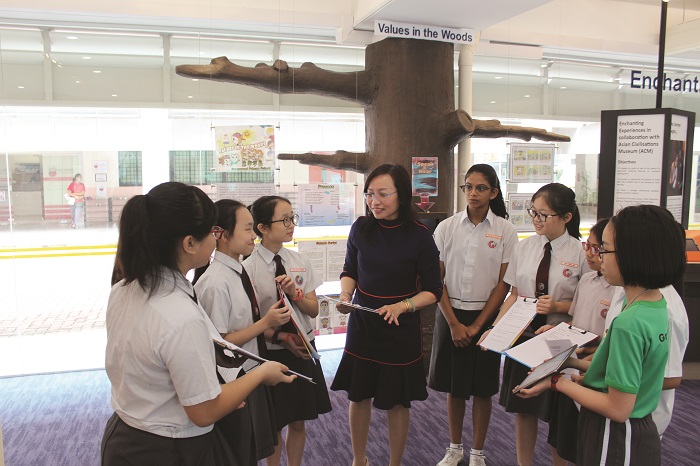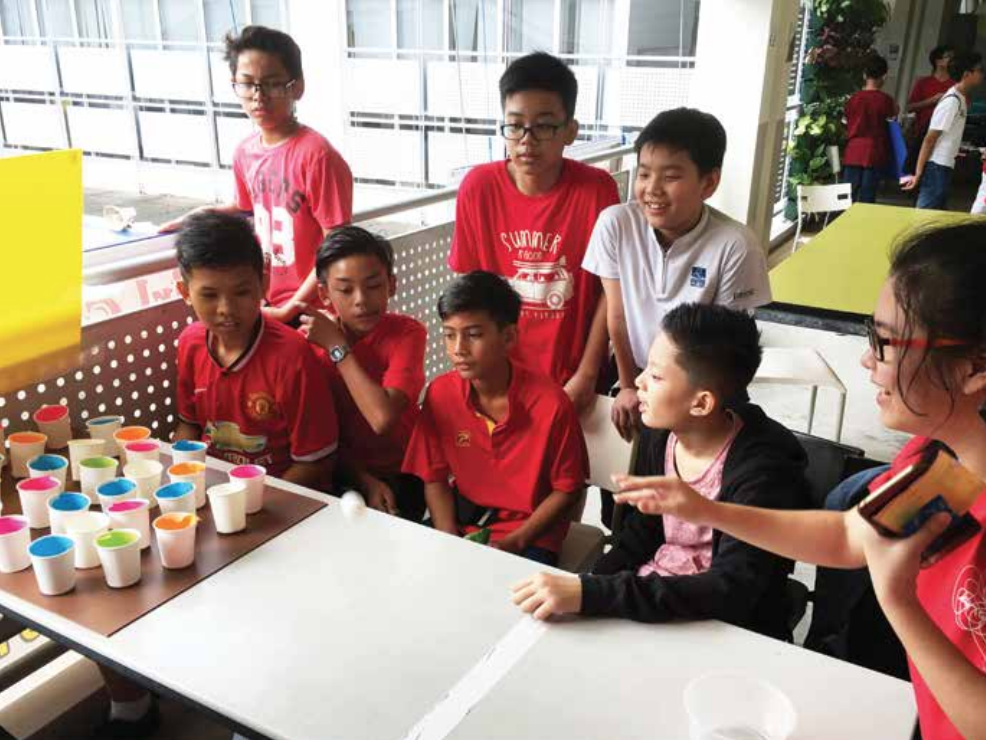Character Education
01 Apr 2020


A conversation with Ms Cheryl Foo, Principal of Greenwood Primary, about combining cartoons, moral values and Mother Tongue Languages.
We all view social interactions through the lens of our own experience, which can impede our growth and learning if we aren’t aware of it.
At Greenwood Primary School, students spend time examining their own background, biases and beliefs through an animated series of short stories. Collectively titled Values in the Woods, the videos feature adorable renderings of cartoon owls (the school mascot) in various situations, voiced-over in Mandarin, Malay or Tamil.
There are six themes, based on the school’s core values, for students to explore how to be wise, enterprising, gracious, responsible, resilient and open to diverse perspectives. Students will first write the script in their mother tongue, and then translate it into English.
The translated script is handed over to students of a different mother tongue, who will storyboard, animate and voice the final product. The year-long project helps students fine-tune their self-awareness, recognise good character traits, and understand issues on a deeper level – directly from each other.
The conversational style and animated approach make the Greenwood fables easy to absorb. For example, one episode explores how a lack of graciousness can lead to social exclusion, and the ways to resolve it. We talk to Greenwood principal Ms Cheryl Foo…
Contact: This looks like a fun way for students to learn values and their mother tongue languages at the same time. How did it become a highlight of the school programme?
Ms Cheryl Foo: The inspiration behind Values in the Woods was our school mascot! We had the idea of using animation to bring to life both mascot and values. With that came the idea of using the fables students often learn during Mother Tongue Language classes.
As a student, I’ve always enjoyed these short stories read during Chinese lessons. Many mother tongue children’s literature and comprehension passages talk about good character values. Then, we realise that students can narrate such stories from their own personal experiences.
For instance, graciousness as seen through the eyes of a 9-year-old child. These narratives are more intimate for the students. It doesn’t have to be literature written by adults.
Contact: What insights have students shared with you?
Ms Cheryl Foo: They told me that it was exciting to write about their personal experiences, and the process helped them appreciate their mother tongue languages.
Sometimes, certain expressions in the mother tongue language may not have a direct English translation. For instance, Chinese idioms like “举手之劳” (ju shou zhi lao) might translate to “the effort made was modest”, but could also mean “it’s no big deal”.
One group said they had to redo their voice-overs for parent and grandparent owls because their characters didn’t sound old enough! The students got their grandparents to read the lines, so that they could imitate them.
Animators faced a different challenge. They had to understand the movement and behaviour of the characters, and decide what backdrop and colours best capture the mood of the story. One group explained that back-and-forth discussions with the authors was necessary. It wasn’t so simple after all!
Contact: It sounds like quite a big project for teachers as well.
Ms Cheryl Foo: Credit goes to them for being open, creative, and willing to try new ideas and work across departments.
When the teachers reflected on this project, they realised the energy levels of students were very high. They could feel the difference when students were empowered to decide how the lesson was going to go. The students never had problems coming up with ideas. The tricky part is managing that – which is a good problem!
What’s great was that the animated stories were subsequently used during the Character and Citizenship lessons. These were real stories of filial piety, friendship and family values written by schoolmates they know. Students clearly loved this creative space given to them.
We’ve just started on the second edition of Values in the Woods, because students have been asking us about it.
A version of this article was originally published in Issue 30 of “Contact: The Teachers’ Digest” with the headline “Character education”.





